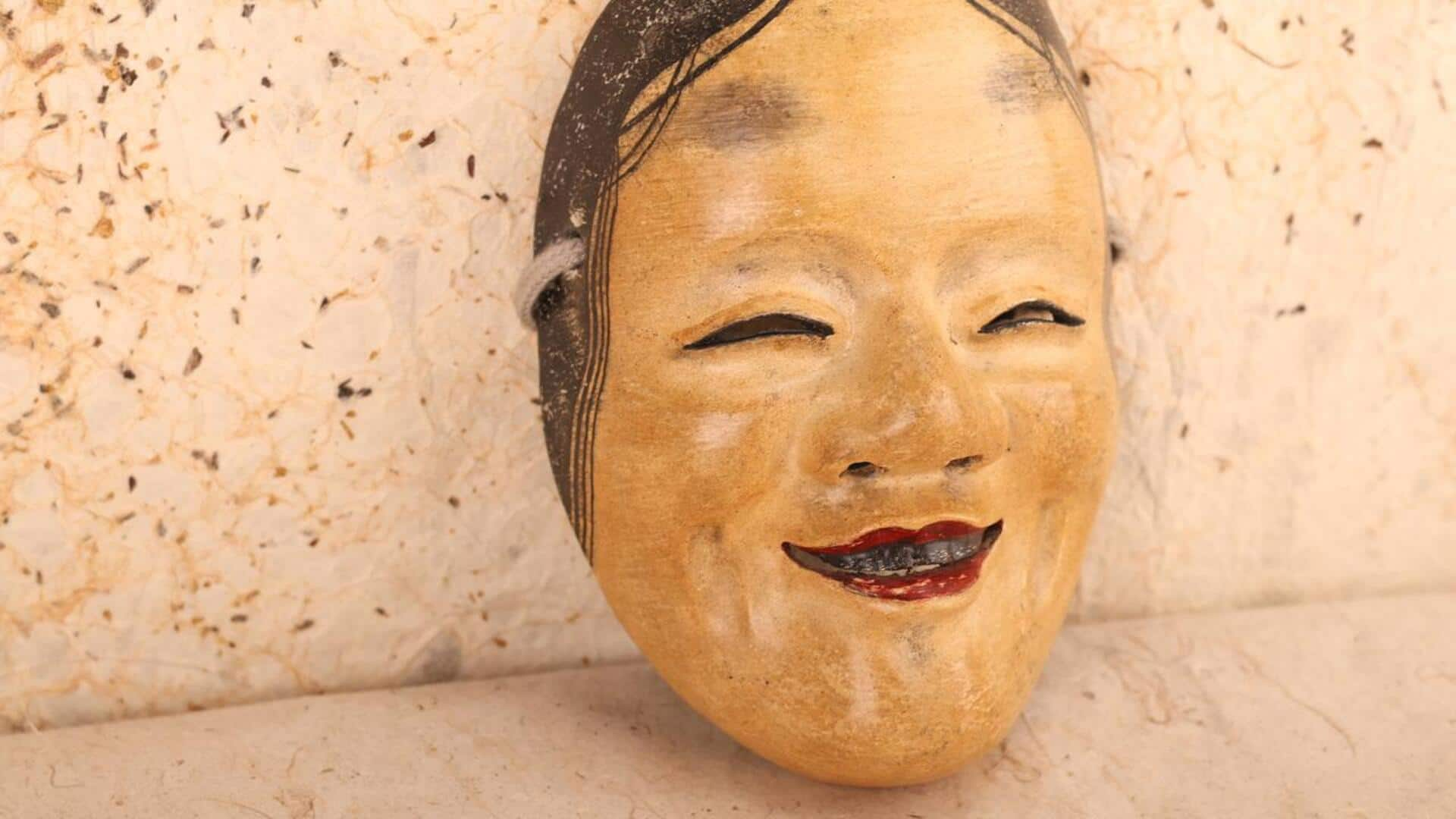
What do Japanese noh masks represent?
What's the story
Japanese Noh theater, a classical form of musical drama, has been performed since the 14th century. One of its most unique features is the use of masks, which are integral to conveying emotions and identities of characters. These masks aren't mere props; they hold deep cultural significance and are created with painstaking attention to detail. Here are five intriguing facts about these fascinating artifacts.
Artistry
Crafted with precision
Noh masks are handcrafted by skilled artisans who often spend years perfecting their craft. Each mask is carved from a single piece of wood, typically Japanese cypress, and painted with natural pigments. The process can take several weeks or even months to complete as each mask must be carefully shaped and painted to achieve the desired expression and character.
Emotion
Expression through simplicity
Despite their simplicity, Noh masks can convey a wide range of emotions. The subtlety in design allows actors to manipulate light and shadow on the mask's surface through slight movements of their head, creating different expressions. This technique requires great skill from performers, as it enables them to portray complex emotional states without changing facial expressions.
Meaning
Symbolic significance
Each Noh mask signifies a particular character type or emotion in the play. Over 200 types of masks are used in the Noh theater, some of which depict gods, demons, women, men, and elders. The choice of mask is important to set the tone and context in a performance. It gives audiences visual cues about the narrative.
Tradition
Historical continuity
The tradition of wearing masks in Noh theater has largely remained unchanged for centuries. This continuity reflects Japan's respect for preserving cultural heritage while staying authentic in modern-day performances as it was hundreds of years ago. Many modern-day artisans still adhere to the traditional practices passed down through generations when creating these iconic pieces.
Performance
Limited visibility challenges performers
Performers donning Noh masks contend with restricted vision courtesy the tiny eye holes carved into every piece. This limitation not only complicates actors' sense of space on stage but also sharpens their concentration on movement accuracy during performances—an integral part considering how much depends on nuanced gestures rather than words alone in this genre.